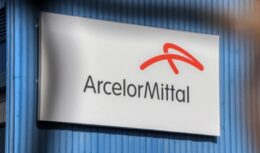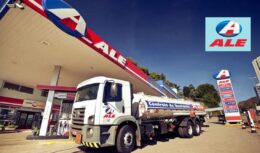
According to Air Products, a multinational in the gas sector, the application of oxygen in the cement industry and nitrogen for concrete cooling represents financial and environmental gains.
Application of oxygen in the production process in the cement industry and the use of nitrogen for safety reasons for cooling concrete is one of the most sought after by the civil construction sector in Brazil, which had the highest growth in eight years according to data from the Brazilian Chamber of Construction Industry (Cbic). Another data, from the Brazilian Association of Construction Materials (Abramat), points out that the 22 segments that make up the sector had real expansion of more than 24% in the last semester. The growth projection for the sector was revised by the Getúlio Vargas Foundation (FGV) and increased from 4% to 8%.
Read also
- Bcapacitor bank saves industries in reducing energy consumption by combating waste, freeing from heavy fines
- Ethanol and gasoline prices register a smaller increase in the Southeast region and give relief to the pockets of app drivers, taxi drivers and workers
- New technology has come to revolutionize the world in civil construction, eliminating waste from concrete, bricks, grout and derivatives without harming the environment
- Schneider Electric's Energy Access Program will empower more than 1 million economically and socially vulnerable people in energy across the planet
- Brazil gains the first and largest graphene production plant in South America, capable of producing up to 5000 kg per year, which together with niobium will revolutionize the destiny of humanity
Cement – the fundamental material for civil construction
This is good news, therefore, for the cement segment, a fundamental material for civil construction, whose production, in turn, is linked to the industrial gas industry, which supplies oxygen and nitrogen in order to make the entire production process safe and sustainable.
The application of oxygen by the cement industry occurs in the initial stage. The raw material, composed of limestone, clay and other materials, is mixed slowly at high temperatures (around 1450 ºC) and, for this, large rotary kilns with burners and pre-calcination chambers are used, which burn fuels in the presence of air, composed mainly of nitrogen and only 21% of oxygen, the oxidizing element.
The secret for greater productivity in this process is, therefore, the addition of pure oxygen to the combustion air, an element that increases the temperature of the combustion flame and also makes it possible to burn greater amounts of alternative fuels, such as tires and blends, replacing coke (mineral coal), generating a reduction in fuel costs.
“When we increase the concentration of oxygen in the combustion processes, the temperature of the flame rises, which generates more heat, allowing for an increase in production. The increase in the % of oxygen in the combustion air also makes it possible to burn a greater quantity of fuels with lower calorific value, such as waste discarded by other companies, which would end up in landfills. With the use of enriched air, it is possible to obtain increases of more than 100% in the amount of alternative fuels burned, replacing coke, a non-renewable fuel, which makes the operation more beneficial to the environment”, explains Fábio Mimessi, Specialist Applications Engineer at Air Products Brasil.
Nitrogen is used to maintain the safety and rapid cooling of the concrete.
Another gas widely used in cement production, for safety reasons, is nitrogen, directly applied in the silos where the coke is stored. “Since it is a combustible product and generates a large amount of particulates (coal dust), coal silos are explosive atmospheres, with a high risk of fires and explosions”, explains Mimessi.
Thus, the process of inertization or blanketing of coal silos applied by Air Products It consists of exchanging the air in the silo, which generates an explosive atmosphere due to the presence of oxygen, for an atmosphere of gaseous nitrogen, an inert gas that does not react or allow burning.
In addition to maintaining safety, nitrogen is used for rapid cooling of concrete, in medium and large-scale works, which may need the concrete to reach a temperature between 15 ºC and 25 ºC in order to avoid cracks and fissures in the production of blocks. Cooling is done by injecting liquid nitrogen at a temperature of -96º Celsius, into the concrete mixer truck or into the feed conveyor, which runs from the silo to the truck.
“Because it has such a low temperature, liquid nitrogen cools the concrete much faster, reducing concrete preparation time by more than 50% and generating savings for the contractor. In places with an ambient temperature above 30º to 32º C, the gain is even more remarkable, since it is very difficult or almost impossible to adequately cool with ice or cold water, due to the limitations of these products in terms of cooling capacity. In these cases, the use of liquid nitrogen is the only way to achieve low temperatures in the concrete, in a short time and with economic viability”, concludes Mimessi.









Air Force F-16 fighters…
True friend, what they shot down were…
Air Force F-16 fighters…
I would like to know what planet you live on…
Air Force F-16 fighters…
Everything is fine, 100-year secrecy,…
Air Force F-16 fighters…
Well... It's flying scrap... Typical...
Air Force F-16 fighters…
Which genocide are you talking about? Than…
It would be nice to be able to help my country with…
Priceless! You never pay. Better continue…
How it works for those from another…
How do you write?
He's upset because the army doesn't...
How will he stay on the air?…
This is fake, it can only be
The investment is 50 billion. There…